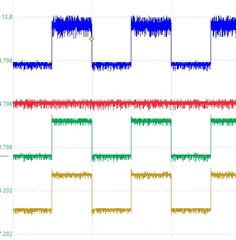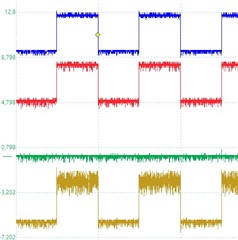Hello,
I have a question. I’m planning to transmit a bidirectional signal via two SN65MLVD207D devices.
It is based on a bidirectional signal that has so far been transmitted via a single wire. There is currently no way to detect if the signal is going to the one or to the other way. This means that there is no way to control both pins DE or /RE pins on the respective chip.
Is there may be an idea how a circuit can look like to make it possible to transmit such a signal with this chip? The signal voltage does have 3.3V
Best regards,
Marcel



